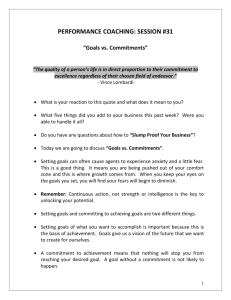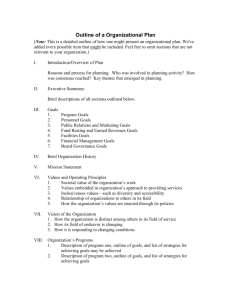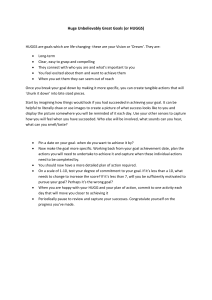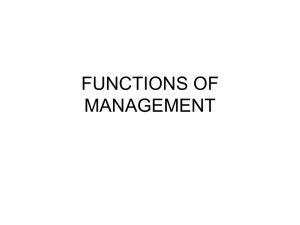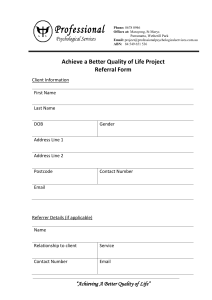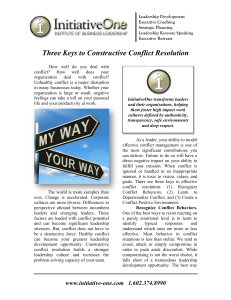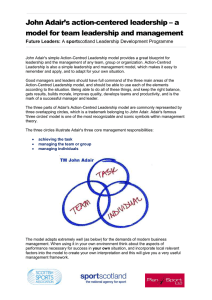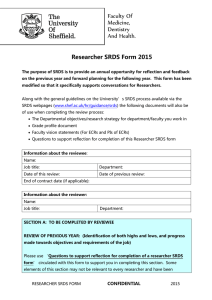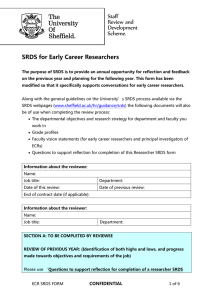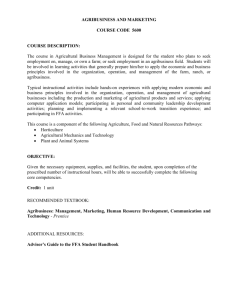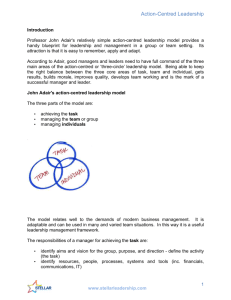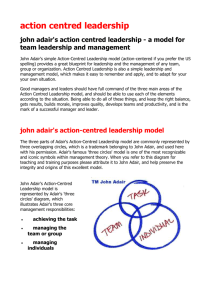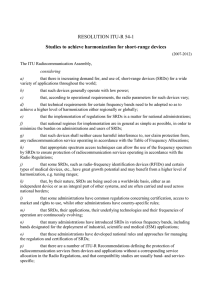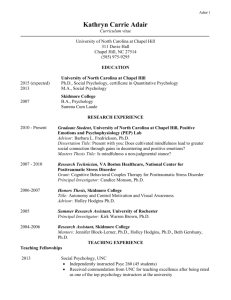How To…Manage Teams
advertisement
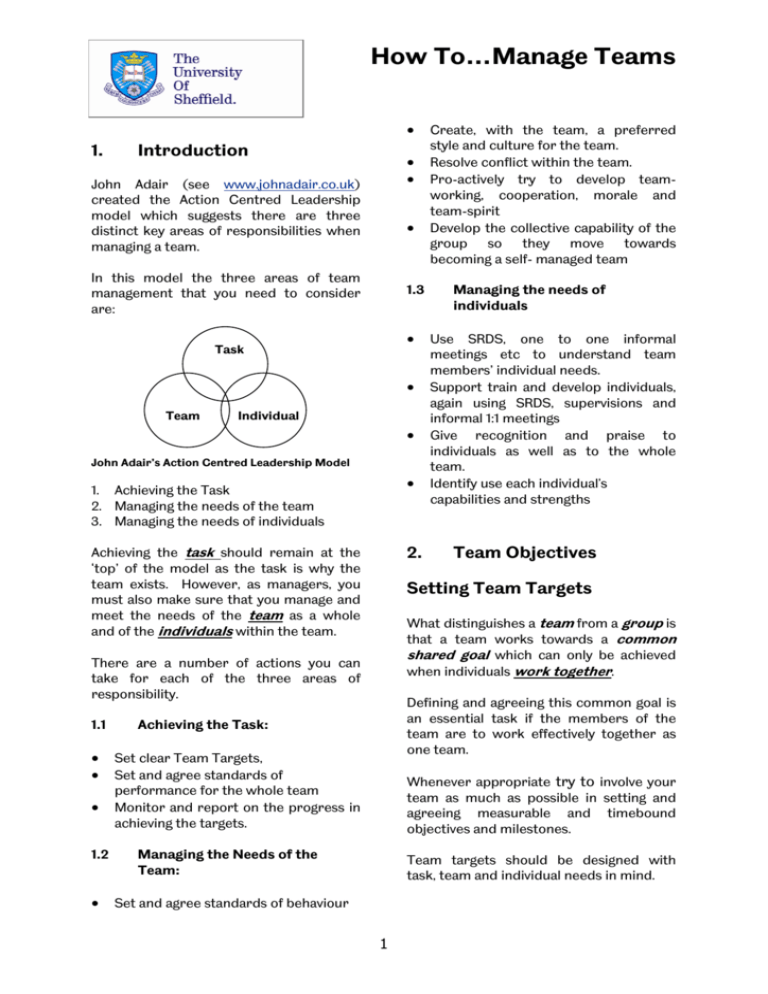
How To…Manage Teams • 1. Introduction • • John Adair (see www.johnadair.co.uk) created the Action Centred Leadership model which suggests there are three distinct key areas of responsibilities when managing a team. • In this model the three areas of team management that you need to consider are: 1.3 • Task • Team Individual • John Adair’s Action Centred Leadership Model • 1. Achieving the Task 2. Managing the needs of the team 3. Managing the needs of individuals 2. Achieving the task should remain at the ‘top’ of the model as the task is why the team exists. However, as managers, you must also make sure that you manage and meet the needs of the team as a whole and of the individuals within the team. • • • 1.2 • Managing the needs of individuals Use SRDS, one to one informal meetings etc to understand team members’ individual needs. Support train and develop individuals, again using SRDS, supervisions and informal 1:1 meetings Give recognition and praise to individuals as well as to the whole team. Identify use each individual's capabilities and strengths Team Objectives Setting Team Targets What distinguishes a team from a group is that a team works towards a common shared goal which can only be achieved when individuals work together. There are a number of actions you can take for each of the three areas of responsibility. 1.1 Create, with the team, a preferred style and culture for the team. Resolve conflict within the team. Pro-actively try to develop teamworking, cooperation, morale and team-spirit Develop the collective capability of the group so they move towards becoming a self- managed team Defining and agreeing this common goal is an essential task if the members of the team are to work effectively together as one team. Achieving the Task: Set clear Team Targets, Set and agree standards of performance for the whole team Monitor and report on the progress in achieving the targets. Whenever appropriate try to involve your team as much as possible in setting and agreeing measurable and timebound objectives and milestones. Managing the Needs of the Team: Team targets should be designed with task, team and individual needs in mind. Set and agree standards of behaviour 1 How To…Manage a Team • Check that your team targets encourage teamwork and do not make it more difficult for people to work in a team. 3. Discuss with team members the need to depersonalize conflicts by focusing on problems not personal characteristics. Resolving Conflict within a Team 1. Ask people in conflict to objectively explain their “bottom line” requirements. 2. Remind people to focus on problems and behaviours, not personalities 3. Encourage everyone to listen to other people’s points of view. 4. During the conflict resolution process keep encouraging points of agreement. . Try the following techniques to prevent and solve conflict. • Regular Performance feedback to the team and individuals Give regular performance feedback to both the team and to individuals so that people know whether or not they are performing to the required standards. This can be done formally and informally at team meetings, one-to-ones and IPRs. 4. Regularly refer back to the team’s purpose and targets. Eg display the team purpose on notice boards or mention the purpose/targets at team meetings etc. • 2. 3. 4. 5. 6. • Develop a Self-Managed Team As a team develops you can help it become self-managing by gradually and only when appropriate, giving more authority and autonomy to the whole team through a 6 stage process. Agree a standard process for dealing with any problems or conflict that the team might face. You decide and announce a decision. Your team does not have an input into the decision. For example. “If there is a problem we will use the following stages to solve the problem and avoid conflict” 1. Agree to depersonalize conflicts You decide and then 'sell' the decision. You make the decision and explain why you have made the decision. We will first identify the root causes of the problem. We will agree criteria for resolving the problem. We will create options that might solve the problem. We will choose the best option to solve the problem. We will agree how to implement the solution. We will review results later on a regular basis to check the problem is solved You present a decision with background ideas and invite questions. You make the decision, give the reasons for it but also ask the team for their views. You suggest a provisional decision and invite discussion about it. At this level you are beginning to share decision making with the team. You present a situation or problem, gets suggestions, then decide. You outline the problem and possible options. The team offers ideas and additional options. You decide or agree with the option(s) you team has recommended Clearly Define Responsibilities Clearly define and communicate individual’s responsibilities in the team. 2 How To…Manage Teams You explain a situation, give your team guidelines about their powers and then ask the team to make a decision This level is about delegating responsibility for the decision to your team within guidelines and limits that you clearly communicate to your team. 3

